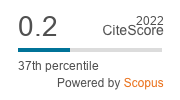Purpose, teleology and progress in biology
Abstract
The aristotelian concept of a natural final cause, often wrongly considered as anti-science, is rehabilitated especially in biology, with the help of recent studies of philosophers of sciences like Mayr, Maynard Smith, Ayala, Artigas, Wandschneider, Muñoz-Rubio, Jablonka and Lamb. To distinguish various types of finalism, focus is put on the neologisms teleology and teleonomy, on the heuristic use of biological finalism in modern sciences (data processing, semiotics, cybernetics, chaos, catastrophe and system theories) leading to the finalistic concepts of function, attractor, Monte Carlo selection, anticipation, preadaptation, feedback and feedforward, free-scale networks. Those biological concepts show tendencies towards utility and optimization, particularly in the morphogenesis and evolution analogies, allowing the prediction of generic forms for the living organs. Living bodies can take advantage of chaos and chance itself, to control or accelerate their reactions, their evolution, to create and explore new niches or possibilities, to free themselves from passive fixism, etc. Darwinism thus is surpassed and included in a broader and moderated vision, restricted to an intermediate and nonexclusive stage. The evolution is four-dimensional: the genetics is completed with the epigenetic and a certain neolamarckism. Grounded on the concepts apposite for live, of “dependant autonomy”, determinability, plastic equipotentiality, tabula rasa, the article proposes a new vision of phylogenesis, evolving in a verticillate stratification to a progressive liberation from material constraints and Natural Selection itself, as evidenced in the case of man.



